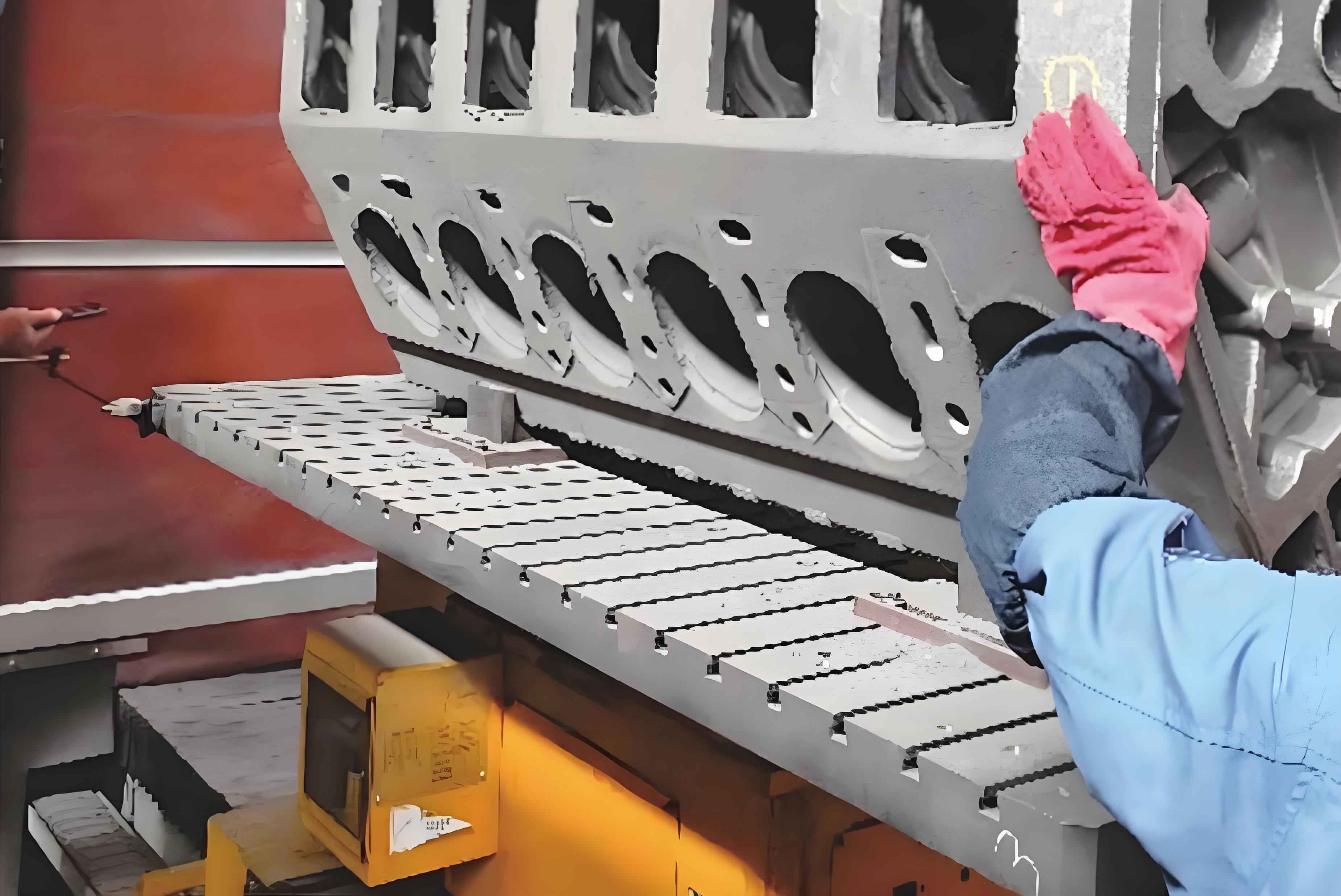
With the rapid advancement of automotive electrification, engine cylinder block technologies must balance performance improvements with environmental sustainability. This study focuses on developing specialized honing tools for ultra-hard thermally sprayed engine cylinder blocks, which achieve a hardness of 400 HV – four times greater than traditional cast iron liners.
Honing Mechanics and Force Analysis
Honing involves simultaneous rotational and reciprocating motions of abrasive tools. The total cutting force ($F_{total}$) combines circumferential ($F_{circ}$) and axial ($F_{axial}$) components:
$$ F_{total} = F_{circ} + F_{axial} $$
$$ F_{circ} = k \cdot A \cdot \sin(\gamma_p) $$
$$ F_{axial} = k \cdot A \cdot \cos(\gamma_p) $$
Where $k$ = cutting coefficient (0.2–0.3), $A$ = contact area (mm²), and $\gamma_p$ = abrasive particle rake angle.
Honing Tool Composition
High-performance honing tools for engine cylinder blocks require optimized combinations of abrasive materials and binders:
| Component | Function | Key Parameters |
|---|---|---|
| Abrasive | Material removal | PCD (700 grit), 35–50% concentration |
| Binder | Matrix retention | Cu-Sn-Co alloy + graphite (7–10%) |
| Additives | Performance modulation | Nano-cobalt particles (15–20%) |
Binder Formulation Optimization
Through iterative testing, the optimal binder composition for engine cylinder block honing was determined:
| Element | Weight % | Function |
|---|---|---|
| Cu | 54–55% | Structural matrix |
| Sn | 21–22% | Fluidity enhancement |
| Co | 15–16% | Hardness reinforcement |
| Graphite | 7–10% | Self-sharpening promoter |
The inclusion of graphite significantly improved self-sharpening capabilities while maintaining structural integrity in engine cylinder block applications.
Sintering Process Advancements
A modified three-stage sintering profile enhanced tool durability for engine cylinder block machining:
$$ T_{profile} = \begin{cases}
800^\circ C \text{ (10 min)} & \text{Initial bonding} \\
700^\circ C \text{ (2 min)} & \text{Stress relief} \\
400^\circ C \text{ (10 min)} & \text{Stabilization}
\end{cases} $$
This thermal regimen improved tool life by 28% compared to conventional single-stage sintering.
Performance Validation
Field testing demonstrated significant improvements in engine cylinder block processing:
| Metric | Traditional Tools | Optimized Tools |
|---|---|---|
| Service Life | 3,000 cycles | 8,960 cycles |
| Surface Finish (Ra) | 0.8–1.2 μm | 0.4–0.6 μm |
| Cost/Cylinder | $5.60 | $0.86 |
The developed honing tools reduced engine cylinder block machining costs by 84.7% while achieving superior surface quality in thermally sprayed coatings.
Conclusion
This study successfully demonstrates that through strategic material selection and process optimization, honing tools can effectively address the challenges posed by ultra-hard engine cylinder block coatings. The integration of PCD abrasives with copper-tin-cobalt binders containing 7–10% graphite provides an optimal balance between wear resistance and self-sharpening capabilities. These advancements enable cost-effective precision machining of next-generation engine cylinder blocks while meeting stringent performance requirements.
